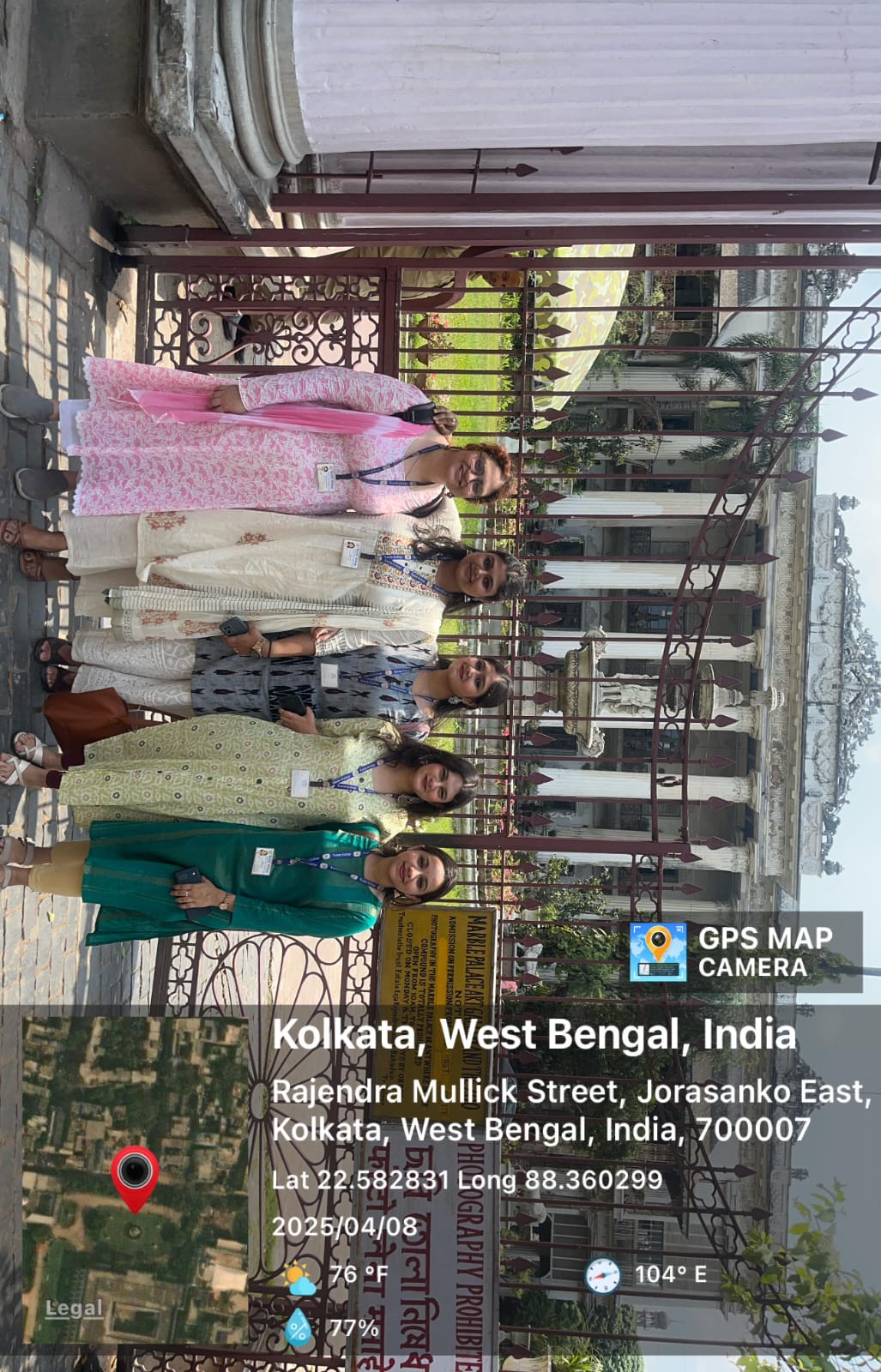Field Trip - Department of History
On 8th April 2025, the Department of History, Loreto College Kolkata, conducted a field trip for the Semester VI students, based on student initiative. For the purpose, the department was divided into six groups with a leader who together decided their place to visit within Kolkata. The main purpose of the trip was to understand heritage and historical significance alongwith instilling confidence and boosting their self-planning skills.
Group 1 had decided their place of visit to be the Belgachia Rajbari, constructed in the 18th century and located in the northern part of Kolkata, served as the residence of the prominent Ray Bahadur family. Renowned for its stunning architectural design, it perfectly blends traditional Bengali elements with colonial influences with, grand columns, ceilings of stained-glass, expansive verandas, Kharkhari Janlas, intricate woodwork, and a series of courtyards and gardens that enhance its regal charm. Despite its gradual decay, Belgachia Rajbari continues to be an integral part of Kolkata's historical landscape, drawing attention from historians, architects, and visitors alike. Both Group 2 and Group 5 decided to explore the beauty of the Marble Palace in North Kolkata. The Palace is tucked away in the narrow pathways of Muktaram Babu Street yet, as you reach it the grandeur of the huge white Corinthian pillars, and the rusty yet sturdy palace gates captivate one's attention immediately. The palace is filled with intricate Neo-classical statues in the Garden Victorian furniture, ornate Belgian glass mirrors, and fine chandeliers. In all, the Marble Palace offers a vivid glimpse into Kolkata's rich cultural and artistic legacy—a perfect blend of grandeur, history, and mystery.
Group 3 explored the St. John's Church in Kolkata, a historic Anglican church established in 1787. Lieutenant James Agg created a stunning combination of British architecture and Indian influences, with stones from Chunar, near Varanasi, and requring almost 15,50,000 bricks to finish. The church had a huge impact on Kolkata's history, functioning as the Anglican Cathedral until 1847. Being present at such a historically rich site with artifacts that were decades old, sparked their interest and curiosity as students of history. Group 4 visited the Netaji Bhawan, located in the heart of Kolkata, built by Netaji's father, Janakinath Bose in 1909 and now serves as a museum dedicated to his life and contributions to India's struggle for independence. They enjoyed an enriching experience that deepened their understanding of India's struggle for independence, providing valuable insights into the life of one of the greatest leaders in Indian history and reinforced the importance of preserving historical sites that serve as reminders of our nation's past. The trip was not only informative but also inspiring, leaving them with a sense of pride in our history and the sacrifices made by countless brave individuals. Group 6 chose the Indian Museum for this purpose because of its immense historical and cultural value. It houses over 100,000 artifacts spanning various fields including archaeology, anthropology, art, geology, and zoology. It is not only a treasure trove of Indian heritage but also a symbol of the colonial and post-independence eras of India. Each gallery offered something unique and sparked curiosity. It helped the students understand how history, science, and art are to be preserved and presented.
The field trip allowed the students to understand the importance, ethos and cultural tapestry trapped within these places. Therefore, captivated our student's imagination and fostered their deeper understanding of some of the lesser- known sites of Kolkata and ensured an educational and enriching experience of organising a an informative and fun trip on their own, that is sure to help them in their future endeavours.

 ANNOUNCEMENTS
ANNOUNCEMENTS
 ANNOUNCEMENTS
ANNOUNCEMENTS
